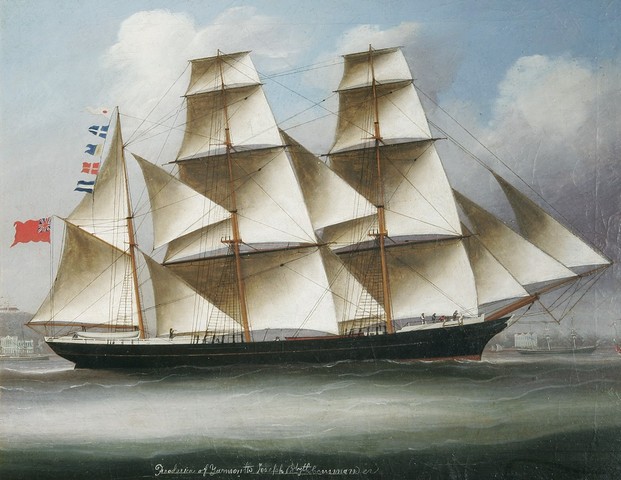|
MARITIME SIGNAL FLAGS |
|
|
|
CAPTAIN
FREDERICK MARRYAT'S CODE OF SIGNALS FOR THE MERCHANT SERVICE 1817-90 |
|
MARITIME SIGNAL FLAGS |
|
|
|
CAPTAIN
FREDERICK MARRYAT'S CODE OF SIGNALS FOR THE MERCHANT SERVICE 1817-90 |
Up to the nineteenth century there was no universally recognized flag signaling system for merchant vessels but in 1817 Captain Frederick Marryat of the Royal Navy developed and published his Code of Signals for the Merchant Service. It was an immediate success and over the next few years was widely adopted by shipping firms and maritime authorities of all nations. Like the Royal Navy system in use at the time, Marryat's commercial code was based on numbered flags combined with distinguishing flags and pendants that when hoisted in various combinations identified a ship or a port, or referred to messages in the code book. Any ship listed in the code book could identify herself by "making her number" via a flag hoist. For example, a hoist consisting of flags 1, 7, 2 and 5 under the first distinguishing pendant identified the British merchantman Challenger. Numerical flags hoisted in conjunction with the rendezvous flag identified ports, lighthouses, etc. while numerical flags either hoisted on their own or in conjunction with the telegraph flag could be used to send messages. Only British merchant vessels were listed in early editions but later those of other nations were added. Warships of many nations were also listed in the code book and they could make their number by hoisting numerical flags under the Union Jack (for ships of the Royal Navy) or their national ensign (for warships of other nations). Examples of these various flag hoists are shown below. The code book was divided into six sections: I (British warships), II (foreign warships), III (merchant vessels), IV (ports, lighthouses, headlands, rocks, shoals, reefs & etc.), V (sentences) and VI (vocabulary). Each section was arranged to facilitate the rapid composition or deciphering of a signal hoist, e.g. sentences and words in sections V and VI were listed alphabetically by keywords. To minimize the need for repeats, all numbers with repeated numerals were skipped, e.g. 11, 22, 44, 88, 100, etc. Marryat's code book went through numerous editions between 1817 and 1870, growing ever fatter as more and more ships were listed. Initially there was only one distinguishing pendant, but three more had to be added over the years to accommodate the greatly expanded listing of ships. In 1870 a new and improved Commercial Code of Signals was introduced by the British Board of Trade and over the next twenty years it gradually supplanted Marryat's system. |
|
|
 The British barque Frederica making her number in Marryat's Code, circa 1865. |
|||
|
FLAGS & PENDANTS OF MARRYAT'S CODE |
|||
|
1 |
2 |
3 |
4 |
|
5 |
6 |
7 |
8 |
|
9 |
0 |
Rendezvous |
Telegraph |
|
Request for Pilot |
|
|
First Distinction |
Second Distinction |
|
Third Distinction |
Fourth Distinction |
|
Numerical |
|
|
EXAMPLES OF SIGNAL FLAG HOISTS |
|
|
Royal Navy Ship of the Line Colossus |
American Merchantman Fanueil Hall |
|
|
|
Port of London • Great Britain |
Port of New York City • United States |
|
|
|
I will stand offshore all night |
I am outward bound |
|
|
|
|
|
|
|